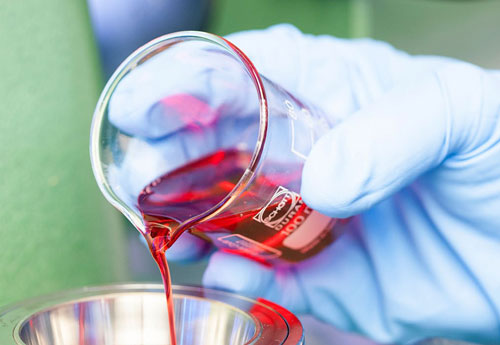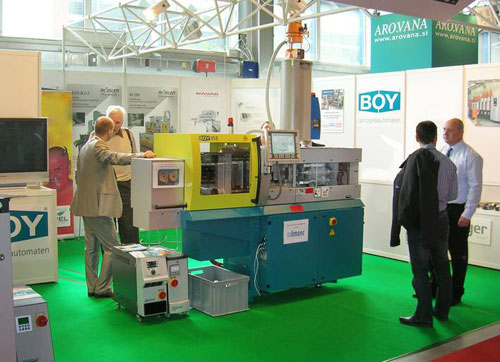The fluid is a key part of any hydraulic system. It transmits power, lubricates components, transfers heat, acts as a sealing agent, and helps minimize the harmful effects of contamination like dirt and water. And hydraulic fluid has become increasingly important when it comes to overall system efficiency.

That’s because OEMs and equipment users are putting greater demands on hydraulic systems. The trend is to downsize circuits by using smaller components while operating at higher pressures. That increases power density, but it also affects operating temperatures and system efficiency. Fortunately, using the right hydraulic fluid can noticeably improve overall machine efficiency, according to engineers at Evonik, Essen, Germany, and that results in significant operating savings. Here’s why.
Fluid viscosity is a key parameter when gauging system performance and efficiency. Two competing issues engineers face when considering how fluids perform in a circuit are mechanical and volumetric efficiency.
If fluid viscosity is too high, mechanical efficiency is low and that leads to friction, sluggish operation, poor flow to lubricated areas and, in the worst case, cavitation and mechanical failure.
On the other hand, if viscosity is too low and the fluid “thin,” volumetric efficiency suffers and the system becomes less responsive and that hurts productivity. It also leads to overheating, high wear and shorter component life.
So it’s important to keep viscosity in an optimum range (and, thus at its highest efficiency) usually between 10 and 100 mm²/sec, depending on the application.
Engineers at Evonik have developed a portfolio of polymer additives, termed Dynavis that improve the viscosity index of standard hydraulic fluids. (Viscosity index (VI) is a measure of a fluid’s change in viscosity with temperature. A higher VI, for example, means less change in viscosity with temperature variations, and vice versa.) That often equates to higher energy efficiency in hydraulic equipment.
Hydraulic fluids work optimally only within a specific temperature range. Compared to monograde fluids with a limited operating window, Dynavis technology maintains a stable fluid viscosity across a wider range of high and low operating temperatures. For example, versus a monograde oil with a VI of 100, Dynavis VI 160 or 180 oils are thinner and generate less friction when cold, meaning less sluggishness and quicker start up; and are thicker for better control, less leakage and more power when hot.
Dynavis oil additives also improve the shear stability of hydraulic fluid. Hydromechanical friction can create shear conditions in the pump. Such actions can irreversibly break down additive polymers and reduce fluid viscosity. Shear-stable fluids, on the other hand, resist shear forces. These high VI fluids maintain viscosity under severe conditions, which is essential to high overall efficiency and long component life.
Hydraulic fluids using the additives can significantly raise productivity and energy savings across a number of applications. Field tests by Evonik with energy-efficient hydraulic fluids in equipment like excavators, skid-steer loaders, and injection-molding machines demonstrate efficiency increases ranging from single digits to above 25%, depending on the task.

For example, in number of trials last year with a Liebherr R 924 LC excavator, engineers evaluated efficiency using reference oil ISO VG 46 monograde with VI of 100 versus several multigrade oils. It tracked productivity in terms of tons of material moved per hour; and efficiency in terms of tons of material per liter of fuel consumed. Results showed efficiency improvements with a VG 46 oil with 160 VI of around 6%, and up to 15% with a VG 32/190 VI fluid. That can ultimately mean fuel savings worth thousands of dollars per month.
Such benefits might be expected in outdoor settings with varied temperatures, but Evonik found equally compelling efficiency improvements in tests with a Dr. BOY 35E plastic injection molding machine. These machines typically operate at high speeds within a small temperature range. Measuring power consumption of the machine using shear stable, high VI fluid versus conventional monograde resulted in an 8% efficiency gain.
According to Evonik, lower power consumption came primarily from optimizing the hydraulic fluid’s viscosity. Fluid formulated with Dynavis oil additives reduced hydraulic power losses due to overheating and internal leakage. For instance, a hydraulic vane pump experiences internal leakage when hot, low viscosity fluid slips backward through the pump vanes, reducing pump output power and generating additional heat. Minimizing internal leakage lets the system run cooler and more efficiently. For a typical plant running dozens of machines, the electricity savings can easily run into the tens of thousands of dollars per year.
As the example shows, conventional wisdom might say that a low-cost monograde is fine if a machine runs in a normal temperature window. But that assumes all parts of a system run at the same temperature. Complex systems rarely have the same conditions everywhere and will exhibit local differences throughout. A shear-stable, high-VI fluid that minimizes viscosity variations over a wider range of temperatures gives users a better margin of safety.
Evonik
www.dynavis.com

